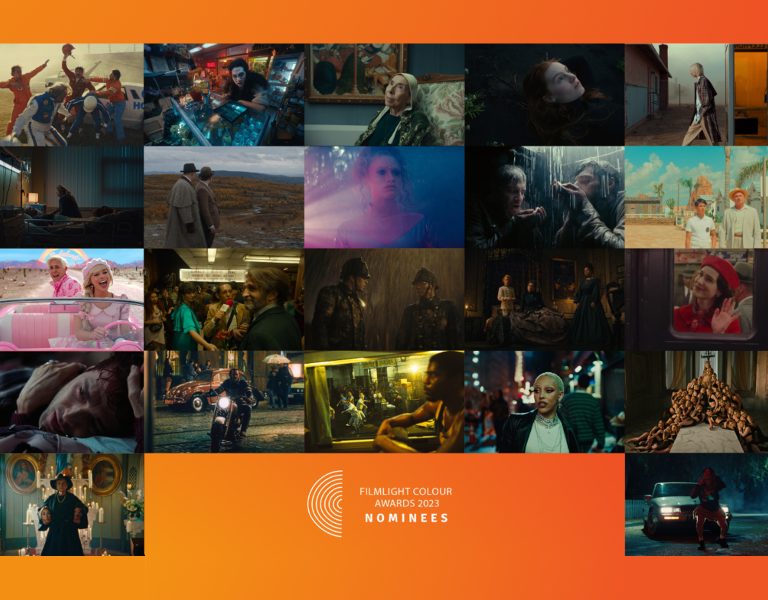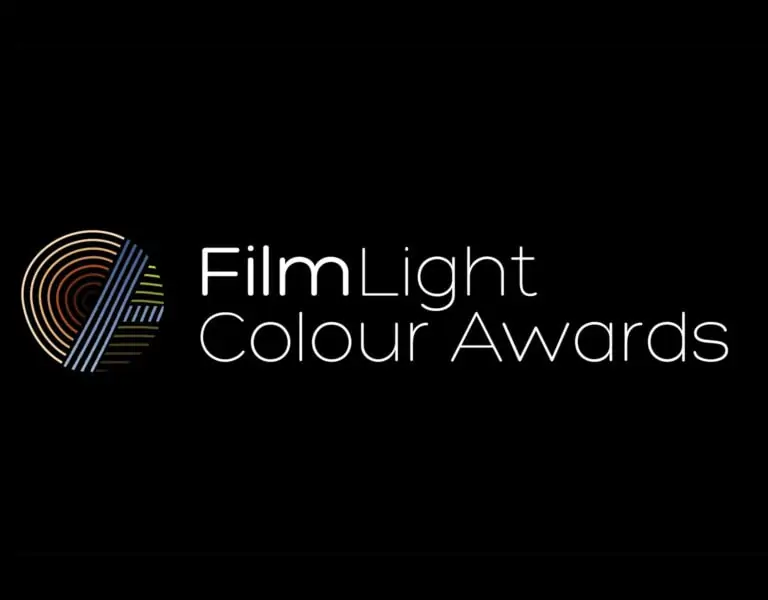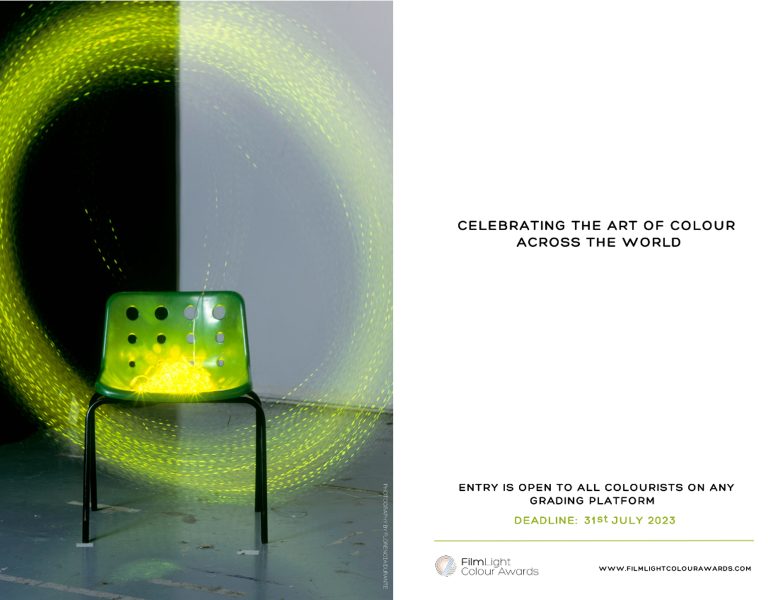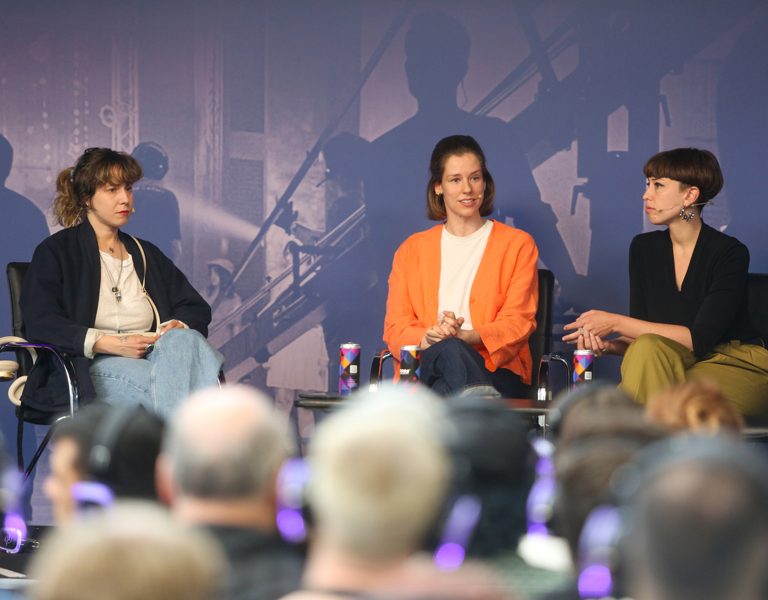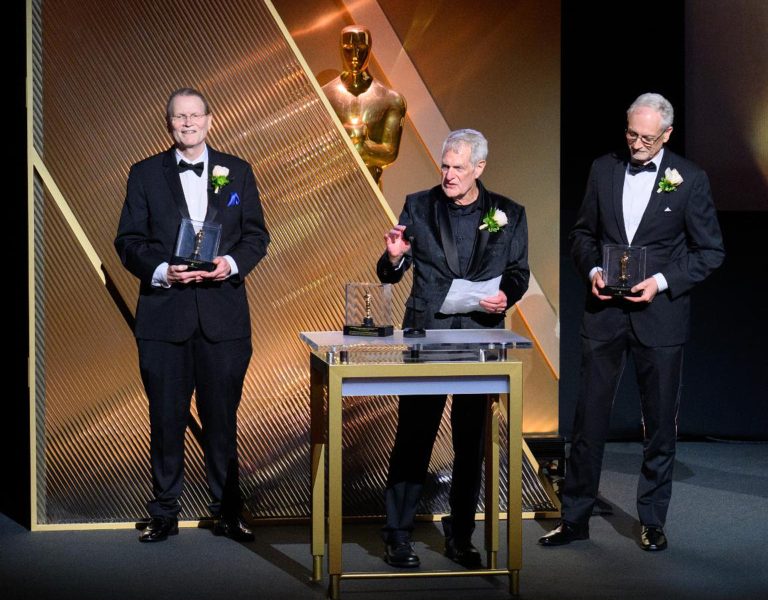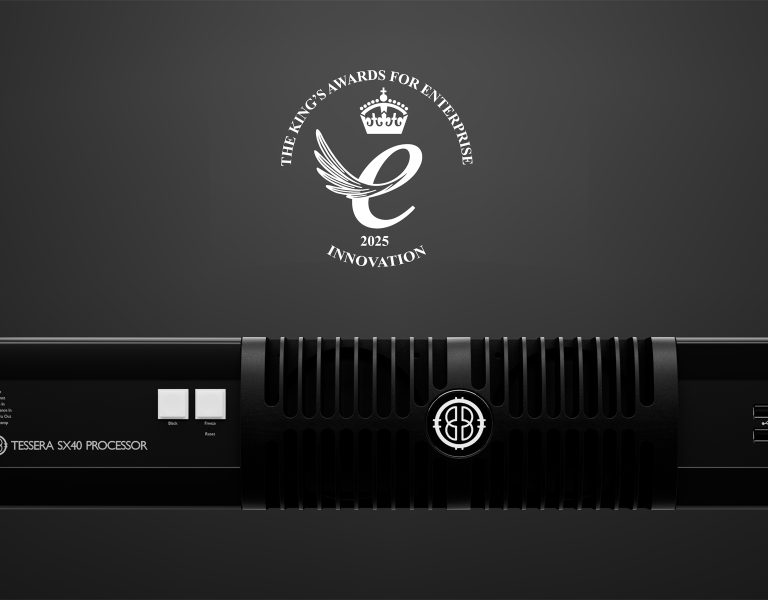
The winners of the 2023 FilmLight Colour Awards were announced live from EnergaCAMERIMAGE on Sunday 12 November. In their third year, the awards received over 400 entries and the winners were selected by a jury of independent, renowned cinematographers, directors, colourists and creatives. Leading this year’s jury was Oscar-nominatd Lawrence Sher ASC, who presented the winners with their awards and chaired a panel discussion with the well-deserving honourees.
“Representing our fantastic jury, I’d love to congratulate the winners of this year’s FilmLight Colour Awards,” said Sher. “These diversely talented artists — and the inspiring work they helped craft — are a testament to the critical importance of the colourist in the art of filmmaking. It’s great to see these artists come from across the globe, proving that good work isn’t limited to huge budgets or big shops, but available to everyone with a good eye and refined skills.”

Barbie
The award for the grading of a theatrical feature went to veteran colourist Yvan Lucas at Company 3 for his work on Barbie.
“I have never submitted my work to any jury before Barbie, and, without wanting to seem uninterested, I was quite content to remain in the shadow of the director of photography,” commented Lucas via video at the ceremony. “However, this movie changed everything. Everyone was talking about the film’s colours, and I thought this incredible journey was something that should be shared.”
Lucas worked closely with director Greta Gerwig and cinematographer Rodrigo Prieto ASC AMC to create the perfect “BarbieLand look” for the critically acclaimed summer blockbuster.
Before the shoot, the trio created a LUT at Company 3, using The Umbrellas of Cherbourg, a Jacques Demy film from 1964, as one of several visual references. For Gerwig, it was important that the skin tones in ‘BarbieLand’ were pastel and not too saturated, but everything else about the shots needed to be full of pinks, turquoises, and the other colours that would eventually help define the film’s unique look.
“We wanted everyone who saw the rushes to have an idea of where the colours would end up in the final film,” explains Lucas of the extended LUT development process. “Our look was set by a LUT we developed that would allow me to grab hold of specific hues and drive them towards the ‘BarbieLand’ colours. Then this was combined in part with a LUT based on the old three-strip Technicolor process and a third, based on Kodak film negative, even though Rodrigo shot digitally. By grading through these LUTs, we were able to bring out those ‘BarbieLand’ colours in a very special way.”
One of the key challenges for Lucas when in developing this LUT was to achieve the vivid colours of ‘BarbieLand’ – the pinks, reds and blues – while keeping the skin tones pastel.
“Usually, when you change colour,” he notes, “you use a hue shift adjustment and push the reds, yellows, etc, and you can make everything more saturated. The problem is that when you select a certain hue, you’ll often also grab onto some of the skin tones. For this film, we asked a friend who is brilliant at this type of thing to create a special plug-in, which allowed us to move the colour in the direction we wanted – so, for example, we could push the reds, blues and pinks – without affecting the skin tones at all. Since that time, the major colour correctors have similar technology but at that time, it was this plug-in that enabled us to be so specific with our ‘BarbieLand’ LUT.”
The scenes on Venice Beach also brought their own challenges for Lucas during the grade. Thanks to California’s famous ‘June gloom’, they had to shoot in overcast weather conditions, so amongst the vivid colours of ‘BarbieLand’, the scenes appeared a bit dull and lacking in colour.
“We had to work with a lot of secondary adjustments – mainly keyers — to essentially ‘repaint’ that scene,” explains Lucas of the grading process.
Accepting the award on Lucas’ behalf was cinematographer Mandy Walker AM ASC ACS who provided consultation during the Barbie grade. Via video, Lucas closed his thank you speech by saying: “Barbie has been one of the best experiences of my life. Thank you again and now I will return to the shadows.”
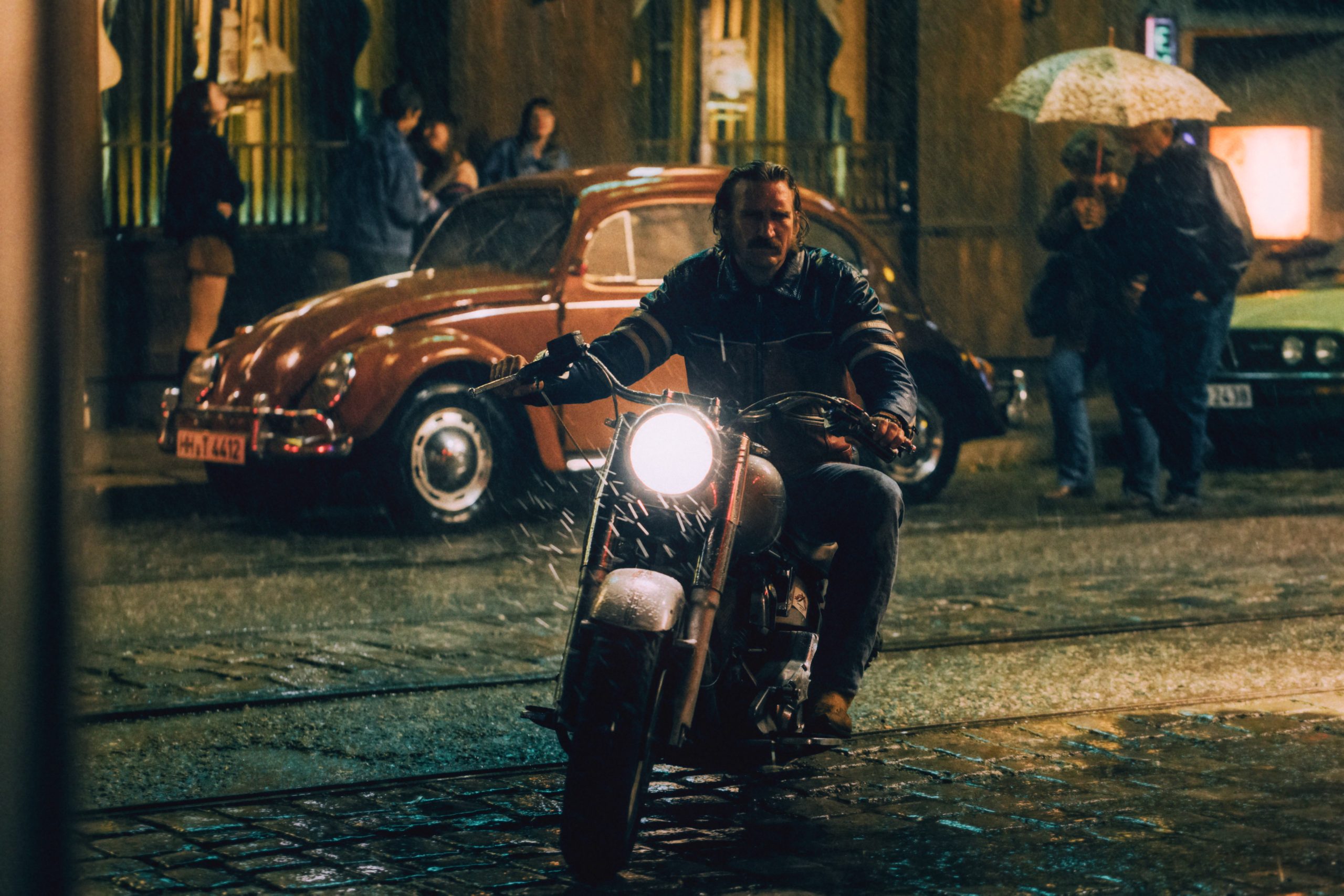
The Pimp: No F***ing Fairytale (OT: Luden)
The award for the grading of a TV series/episodic went to freelance colourist Dirk Meier for his work at D-Facto Motion on season one of The Pimp: No F***ing Fairytale (OT: Luden).
“When I first read the list of nominees and their projects, I couldn’t fully grasp how I made it into this group,” commented Meier. “And now I’m really grateful and touched that the jury found my work merits this award.”
At the ceremony, Meier urged more colourists to attend Camerimage and “strengthen the collaboration between cinematographers and colourists even more.”
He knew this was the right project to enter for the FilmLight Colour Awards, as all the elements of storytelling came together so well, which allowed him to push boundaries in the grading suite.
“The story, which was set in the early 1980s around Hamburg’s red-light district, demanded a strong visual style and was supported by great production design, costumes and make-up, a very talented DoP, skillful lighting, directing and brilliant performances of very ambiguous characters. And this combination is quite rare, so I was certain this must be the project to submit,” comments Meier.
Cinematographer Tim Kuhn contacted Meier four months prior to the start of principal photography. During pre-production, Meier read the scripts and discussed the visuals with Kuhn. They then went on to complete hair and make-up, costume, lens and look tests, which is rare in Germany on such a deep level.
“This was an extremely rare and rewarding moment for me, to have the production designer, gaffer, heads of costume and make-up, the two directors, and a producer next to the DP in my grading suite to show and discuss our look test,” comments Meier.
For the look, Meier and Kuhn found inspiration in a music video that used documentary footage from a sequence of the 1962 movie, Mondo Cane, shot in the red-light district around the Reeperbahn street in Hamburg. Meier developed a highly textured look with a dark and moody atmosphere. Especially in the HDR version he worked with the extended range of contrast and wider colour palette to create a period feeling with lifted black levels, while ensuring the 1980’s neon lights stood out.
“It was unique as I had never before had the commissioning editor and showrunner, who were regularly checking the grading, ask for it to look even darker and grittier, while the DoP and I were initially more careful. But we were happy to embrace that direction,” recalls Meier.
In the final grade, Meier explored tools to enhance the patina of the sets, distortion and bokeh of the lenses and added grain and frequency-based contrast.
This was only Meier’s second episodic project, so one of the key challenges for him was the length of time spent on one project, which was approximately seven weeks.
Collecting his award at the FilmLight Colour Awards ceremony, Meier commented: “Can we double check the envelope? Seeing all these nominees, it’s amazing and I’m very grateful. Thank you FilmLight for setting this up and to the jury for putting in the time and effort to watch all these applications. Of course, the production was great, they did an amazing job – from production design to costume and make-up – and allowed me to go so bold together with the amazing work of the DP, Tim Kuhn (who was the DP on last year’s Spotlight winner, as well).
“I encourage all colourists out there, come to Camerimage – it’s a great place and a great festival and I would love to strengthen the collaboration between the colourist and the cinematographer even more.”
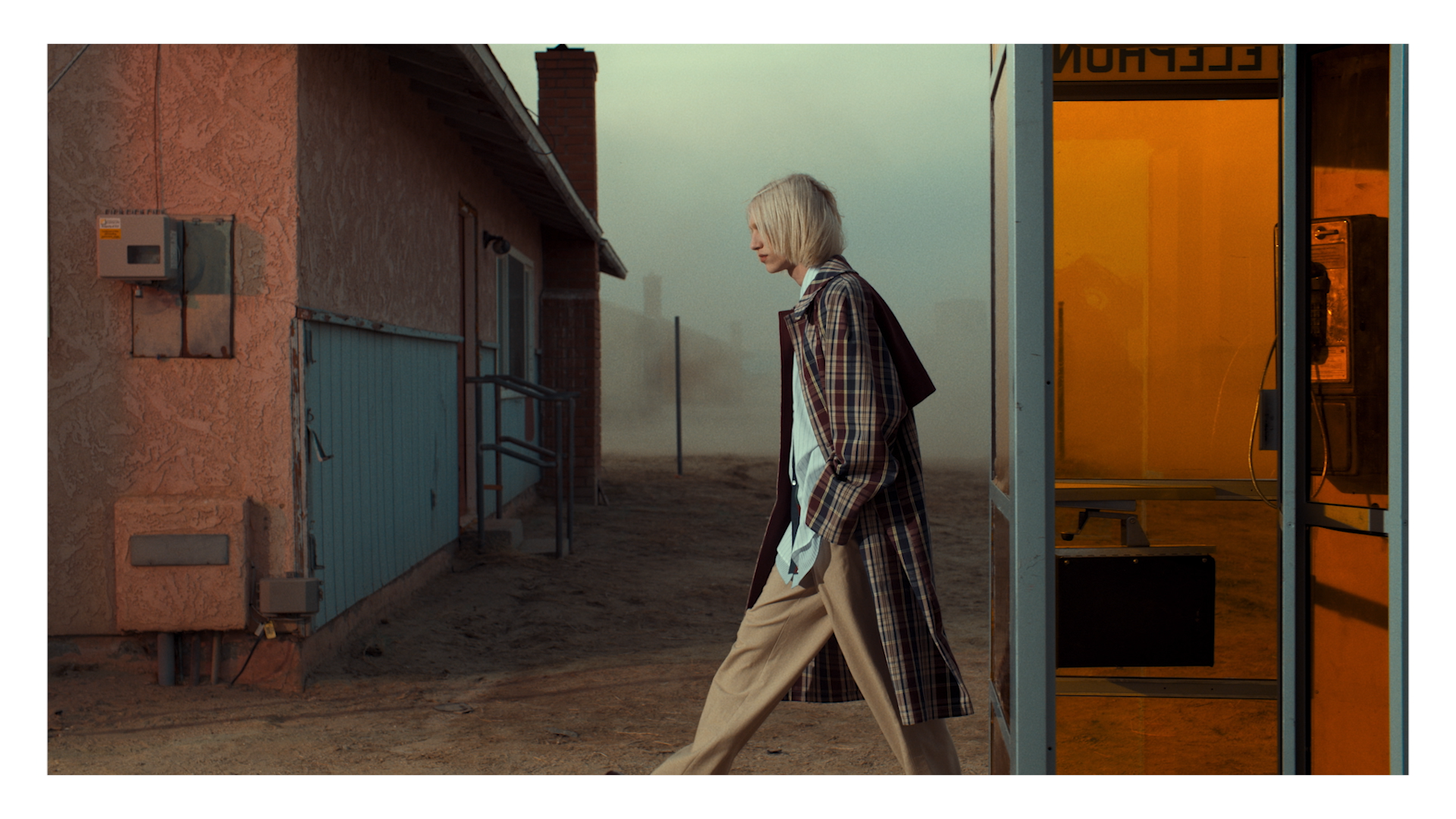
Zara Man, ‘SS23’
The award for the grading of a commercial went to Tim Masick at Company 3 for his work on Zara Man, ‘SS23’.
Masick, who also won the commercial category in 2021, worked with director Fabien Baron and DP Philippe Le Sourd ASC AFC to create the winning spot. Masick worked to create a fantasy/dream world where the elements are subtly dramatised – recreating the mood and imagery of Red Desert (1964, Antonioni), Paris, Texas (1984, Wenders), and photographer Todd Hido.
“I am honoured that our work has been recognised by the jurors among so much great work from around the world,” comments Masick. “Winning a second time is a great affirmation, but also feels like a challenge to go beyond and push things further.”
“I have been fortunate to work with Fabien Baron for more than 20 years. His taste and creativity have influenced how I see things more than anyone in my career. With each project, I eagerly look forward to seeing what world he has created,” adds Masick.
Because of this strong history, Masick was able to do a version based on the mood of the piece and presented it to Baron. They refined it and came back to it the following day to see that they still liked it – adjusting a few things until they felt everything was where it should be.
“The look doesn’t impose too much on the film. Instead, it heightens the elements that were designed and captured. Appropriate exaggeration and restraint add to the tension of the piece,” comments Masick.
A challenging part of the grade for Masick was maintaining the smoke colour through the different scenes.
“I believe it was a one-day shoot, so time of day and density varied scene to scene,” he comments. “Getting nice shape and contrast to the skies was also a priority and took time to finesse.”
Collecting his award at the FilmLight Colour Awards ceremony, Masick said: “I would like to thank FilmLight and everybody who puts this event together – it’s great to have an award recognising colour work – as well as all the jurors who put in a lot of time. Also, Fabien Baron and Philippe Le Sourd as well as the whole Baron and Baron team for creating such a great piece. Finally, the Company 3 New York team for all their day-to-day support.”
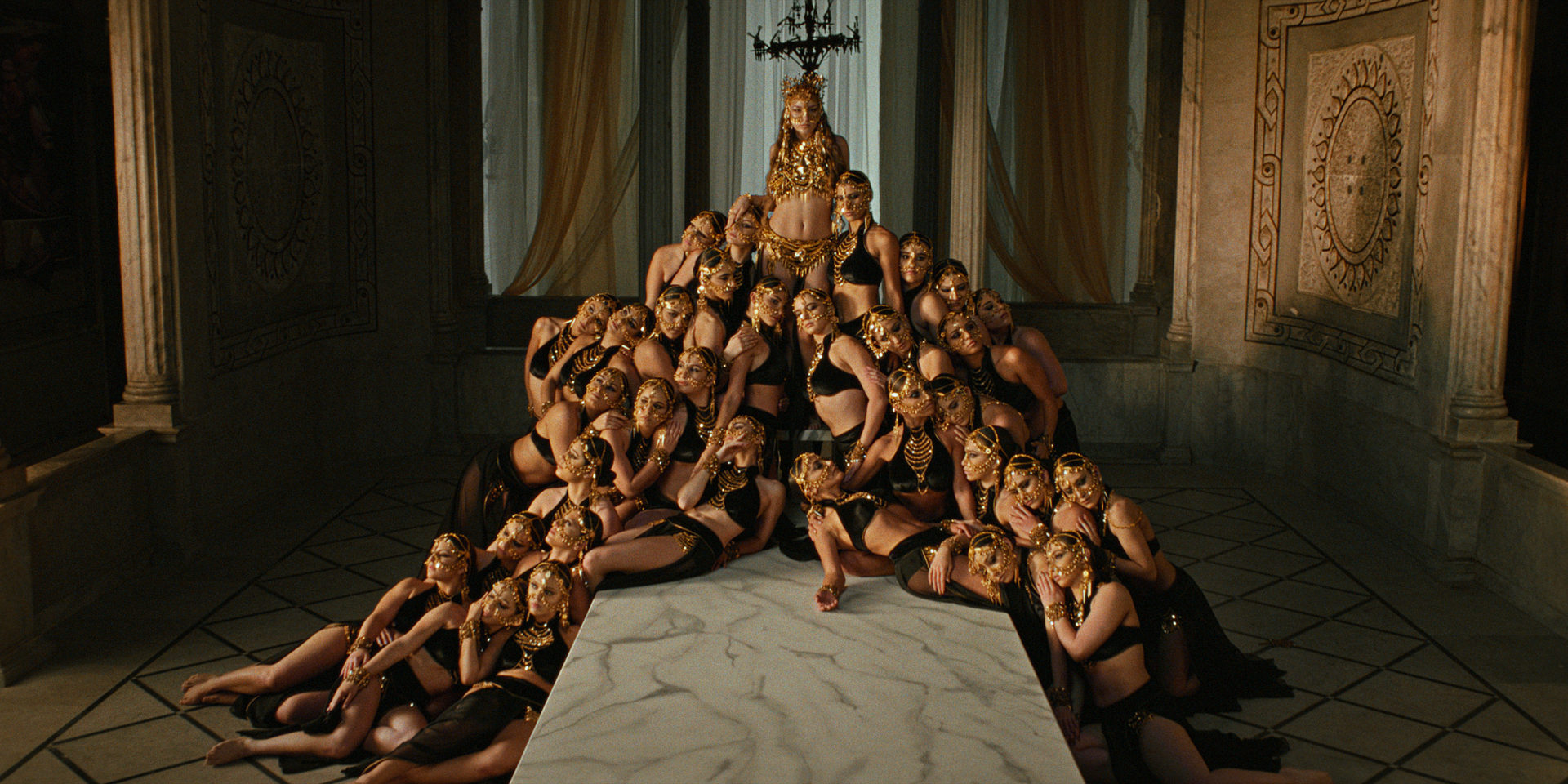
‘Horra’ by Mayyas
The award for the grading of a music video went to freelance colourist Marina Starke for her work on ‘Horra’ by Mayyas.
Starke was nominated across three categories this year, which makes her a five-time nominee of the FilmLight Colour Awards.
“I am absolutely honoured,” says Starke. “It was such strong competition and amongst everyone I look up to, as well – I am extremely happy.”
‘Horra’ was directed by the all-female group’s choreographer, Nadim Cherfan, and shot by cinematographer Shadi Chaaban, who Starke worked closely with to create the moody, mysterious, and bold aesthetic that they were looking to achieve.
“When Shadi approached me about the project, he sent some stills over and I instantly knew I needed to see more,” comments Starke. “I watched the edit, and I was so blown away. It’s not a typical music video.”
The music video represents a dance group so, for Starke and DP Chaaban, it was important that each member stood out in equal measure – without losing the cinematic touch and the play with light and shadow. There were no visual guides or references used, either, with Chaaban and her working closely together, trusting each other’s vision and sharing the progress with director Cherfan.
“Because he’s a choreographer, he looks at the image more like a stage – a little bit different from the usual film director,” comments Starke. “It was an important perspective, and we went a little back and forth on some of the scenes. In the ‘Tree of Life’ scene, for example, Nadim had imagined the bodies the women are wearing to look like skin. We went for a warmer look at the beginning, but it didn’t really make them stand out, so we pushed it more towards blue which made them light up like a diamond. And then we added the sparkles and really made them glow.”
The choreographer Cherfan works a lot with women, and Starke enjoyed the feminist approach and message the music video stood for. The video begins with a woman in a black cloak stealing holy water from a fountain, awakening an entity and freeing the women who perform a ritual dance.
“The Mayyas dance group are from Lebanon, where it’s still very conservative and women are more oppressed than in the western world,” comments Starke. “In the video, it’s all about them being together as a collective and fighting for an era of free women.”
Collecting the award at the ceremony, Starke said: “Thank you FilmLight for celebrating our craft. I would like to thank our cinematographer, Shadi Chaaban, who it was a pleasure to work with – it was our first time, but it felt like we’ve known each other for a while. Thanks also to Nadim Cherfan, director and choreographer, for trusting us to bring the colour from the stage to the screen. It’s great to see my work acknowledged and I have to say, as a woman, I am really proud to be seen today. This music video is about women breaking free as a unity and I think it’s a really great project to win with. I hope it can inspire us to create more diversity in the industry.”
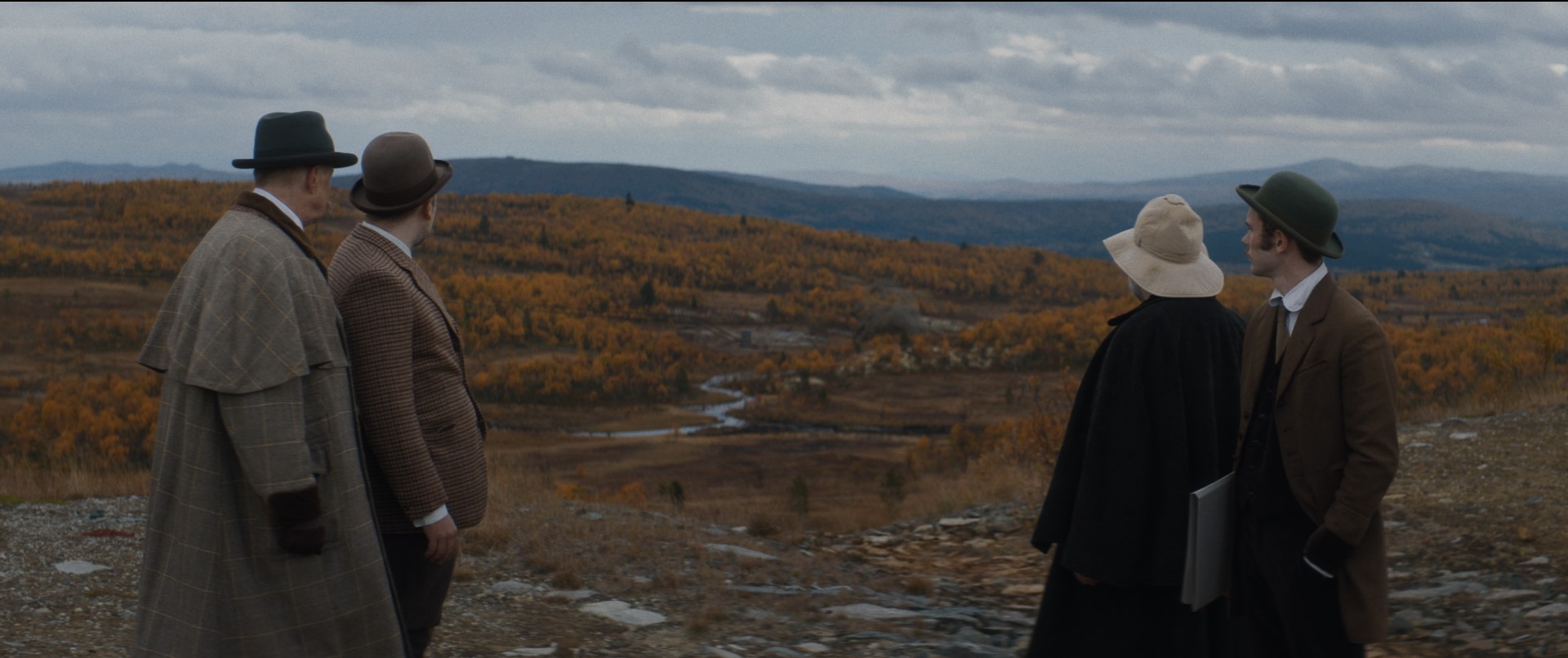
Possession
The Spotlight award, which showcases the craft that contributes to the creative impact of a low budget feature, went to freelance colourist Cem Ozkilicci for his work at Uhoert on Possession.
Inspired by Scandinavian romantic and landscape painters, Ozkilicci completed the grade over 10 days, working closely with director Henrik Martin Dahlsbakken and cinematographer Oskar Dahlsbakken to create a nostalgic look with a unique patina – achieved through a combination of lenses and sharpening techniques in grading.
“I am deeply honoured and humbled,” comments Ozkilicci. “Being shortlisted was in itself a reward for the hard work invested, but to be selected as the winner amongst all the nominees by such a remarkably talented, diverse and highly respected jury was unexpected. I am truly grateful.”
Ozkilicci selected this project to enter as he felt all elements of the film came together beautifully – from the choice of lenses by DoP Oskar Dahlsbakken, the unique location and light in northern Norway, right through to the art department’s efforts.
“In the end, I felt Possession had a certain visual quality and character that was worth sharing,” he comments.
Ozkilicci had worked with Henrik Martin Dahlsbakken and Oskar Dahlsbakken on previous projects. For Possession, they weren’t able to create a show LUT due to uncertainties around the budget and scheduling, but it didn’t stop a successful collaboration.
“The grading was done over 10 days,” explains Ozkilicci. “After going over the references and exchanging thoughts, we started grading with Henrik and Oskar after edit lock. Most of the grade was done in collaboration with Oskar and having a couple of review sessions with Henrik. As a colourist, I find working with Henrik and Oskar very easy due to the great chemistry they have with each other.”
The main reference was There Will Be Blood by Paul Thomas Anderson and the idea was to give it a similar feel, but a bit more ‘Nordic’.
“It was also very much about adding as much production value as possible,” explains Ozkilicci. “We wanted to accentuate the Nordic landscape without going overboard and keep the palette more subdued. We looked at a lot of Norwegian painters from the 19th century. We went through the works of Johan Christian Dahl (a Norwegian romantic painter) as well as other Scandinavian and Russian landscape painters.”
The grade supported the storyline by aligning the image with the references which were from a similar era, and giving it the nostalgic feeling they wanted to create.
“The story has an element of supernatural as well as realism due to the fact that it took place during the Spanish flu pandemic,” comments Ozkilicci. “We had to keep a fine balance between making it gritty, yet not too forced or stylised.”
For Ozkilicci, there were very few challenges in the grade, but the most difficult task was finding the appropriate texture per focal length in certain instances and keeping the image on the edge of darkness.
“A big challenge could have been both Oskar and Henrik getting used to the dailies and not having space creatively for a new visual direction. They were thankfully open minded and embraced the idea of using our references in effort of building a look that suited the story and mood.”
Live from the ceremony, Ozkilicci said: “Wow, thank you so much. First of all, a big thank you to the jury – it means so much that this comes from such a diverse and talented group. Thank you to FilmLight for not only creating such a great grading system to work with, but also for this platform to showcase our work as colourists to our peers – and making it system agnostic. Thank you to Camerimage for hosting this event for the third year in a row – it means so much that we have a venue to showcase this. Dziękuję bardzo.
“A big thank you of course to Henrik Martin Dahlsbakken and Oskar Dahlsbakken for making me part of the team and giving me the chance to work on the project. Thank you to the art department for doing the impossible with such a tight budget. Thank you to Uhoert, the post facility, for supporting the project and the wonderful team there. And thanks to my family for supporting me throughout my career – my wife for putting up with the late nights and my son for still loving me despite not being there every night to wish him goodnight. Thank you.”
From FilmLight
Wolfgang Lempp, co-founder and CEO of FilmLight, said: “A huge congratulations to the winners, each of whom thoroughly deserves this recognition. We know winning is getting harder, and not only because the number of entries is increasing, but expectations keep going up, too. So, to all those who didn’t win this year my message is: be bold, be original, and please try again next year!”
The Colour Awards are led and organised by FilmLight, in conjunction with EnergaCAMERIMAGE, and are supported by prominent international groups such as the ASC (The American Society of Cinematographers), the BSC (British Society of Cinematographers), the AFC (The French Society of Cinematographers), CSI (Colorist Society International), CNSC (Chinese Society of Cinematographers), Imago (the International Federation of Cinematographers), the Polish Society of Cinematographers (PSC) and many more.
Watch the 2023 FilmLight Colour Awards Ceremony here.
